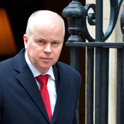The best thing that any British government has done in my lifetime is to bring peace to Northern Ireland. Removing terrorism—which my generation was resigned to in the 1970s and 1980s—from the streets of the province transformed the UK at large. Tony Blair and John Major share the credit, alongside Irish leaders Albert Reynolds and Bertie Ahern, and 25 years after the Good Friday Agreement was signed there are clear lessons to draw from their achievements.
Lesson one: lead, don’t follow. John Major’s decisions to talk to the IRA and announce in the Anglo-Irish Downing Street Declaration of 1993—which led to the 1994 IRA ceasefire—that the British state had “no selfish strategic or economic interest” in Northern Ireland were astonishingly bold acts of statecraft. It was less than a decade since the IRA had come close to murdering Margaret Thatcher and many of her ministers in the Brighton bombing of the Tory party conference, and just two decades since Ian Paisley and his radical Unionists—founders of the DUP—had wrecked Ted Heath’s attempt at power-sharingbetween the two communities in Northern Ireland. The Unionists were closely intertwined with the Tory party, especially its right wing, and Thatcher had made no move to restore power-sharing, which rendered Major’s initiative all the more sensitive and courageous.
Major didn’t have to do it. The path of least resistance inside the Tory party was to maintain the status quo of denouncing terrorism and continuing a colonial-style Unionist regime in Northern Ireland. He did it because he thought an acceptance of terrorism at the heart of a democratic state was simply unconscionable if there was the chance to end it. Major’s initiative was crucial to Tony Blair’s ultimate success in bringing about a comprehensive settlement in 1998. It not only got the peace ball rolling before Blair took office, but it effectively closed off any opportunistic attempts by the Tory opposition at Westminster after 1997 to encourage Ulster’s “orange” Unionist leadership to resist power-sharing with Sinn Féin. Without the bipartisan understanding between Major and Blair, the peace process might never have concluded successfully.
Lesson two: don’t reject the right policy just because it has failed before. The right peace strategy for the 1990s was power-sharing between Unionists and Nationalists within a devolved Northern Ireland Assembly, just as it had been in the 1970s. As one wag put it, the Good Friday Agreement was “Sunningdale for Slow Learners” (Sunningdale was the power-sharing agreement negotiated by Heath’s government in 1973). The fact that it had failed once did not make it the wrong policy; rather, the imperative second time around was to get the politics right, and particularly to generate sufficient Unionist support. Tony Blair secured this—first with David Trimble, then with Ian Paisley himself, through a combination of long, personal and patient diplomacy, and strategic concessions to safeguard Unionist interests.
Lesson three: the more international support the better. Obviously a prerequisite for the peace process was close synchronicity with the Republic of Ireland, which both Major and Blair worked at incessantly. The United States was a key partner too. Bill Clinton was prevailed on to appoint a special envoy, the highly tactile former Senate majority leader George Mitchell, who played a key role in tandem with both Major and Blair, not least in steadily pushing the IRA towards the decommissioning of its armaments. A retired Canadian general was recruited to oversee that decommissioning process. The EU, which Ireland and the UK both joined in 1973, was vital both to Anglo-Irish diplomatic cooperation and to making possible the borderless Ireland which underpinned the Good Friday Agreement.
Lesson four: successful political leadership is a process of total immersion, not just grand strategy. Both Major and Blair were in effect their own Northern Ireland secretaries, involved in the detail of negotiations for weeks and months on end, particularly in the case of Blair and the Good Friday Agreement. In politics, as in all critical endeavours, you can’t separate “strategy” and “implementation”: the two overlap at every turn. It’s why prime ministers can only ever accomplish a small number of really big projects—and many PMs achieve nothing at all. Where do these four lessons apply most strikingly today? Still in Northern Ireland, as demonstrated by Rishi Sunak’s huge operation to deliver the Windsor Framework seeking to reconcile Brexit and the Good Friday Agreement. But they equally point the way to how Brexit itself may be reversed in due course. If that is ever going to happen, it will require total immersion by a prime minister who leads boldly, with strong international alliances, and who doesn’t try to reinvent the essential policy of rejoining the European Union.













